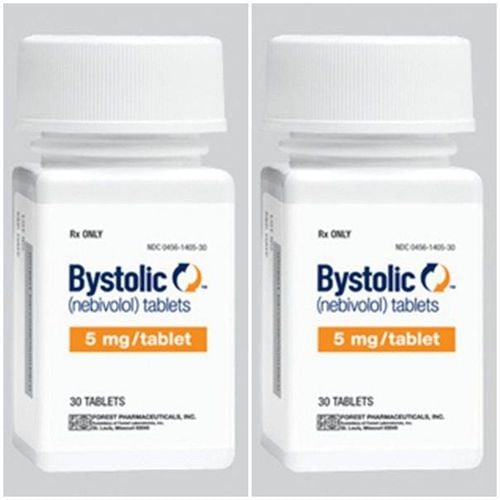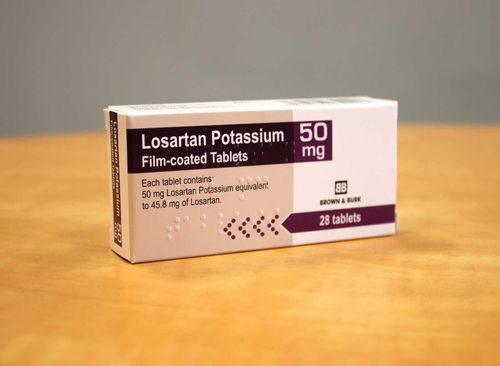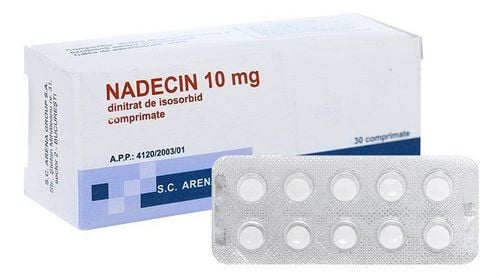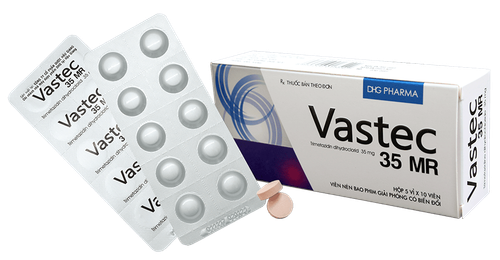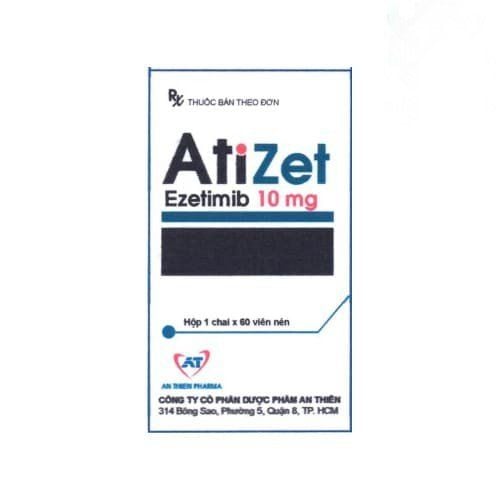This is an automatically translated article.
Usasartim belongs to the group of cardiovascular drugs, prescribed by doctors. To use the drug effectively, patients need to learn some information about the uses, dosage and notes when using Usasartim in the article below.
1. What is Usasartim?
Usasartim is a prescription cardiovascular drug. Usasartim drug is domestically produced by Ampharco U.S.A Pharmaceutical Joint Stock Company - VIETNAM, under registration number VD - 21230 - 14.
The main ingredient in Usasartim is Irbesartan 150mg with Usasartim 150 and the content of Usasartim. 300mg for Usasartim 300.
Usasartim is in the form of film-coated tablets, the red and white box stands out, the content is printed in green for easy viewing. The drug is packaged in the following forms: Box of 1 blister x 10 tablets, box of 3 blisters x 10 tablets and box of 10 blisters x 10 tablets.
2. Uses of the drug Usasartim
Irbesartan is the main ingredient in Usasartim, an Angiotensin II (Ang II) receptor antagonist, causing vasoconstriction formed from Angiotensin I in the presence of an angiotensin converting enzyme-catalyzed reaction. Irbesartan in Usasartim is able to inhibit vasoconstriction and aldosterone secretion of Ang II by binding to the AT1 receptor.
Usasartim is absorbed orally, peak plasma concentrations after 1.5 -2 hours of use. Elimination half-life is 11 to 15 hours. Usasartim blood concentrations reached steady state after about 3 days of administration.
3. Indication of the drug Usasartim
Usasartim 300 is indicated in the following cases:
High blood pressure; Kidney disease on the background of type 2 diabetes.
4. Dosage, how to use the drug Usasartim
To use Usasartim safely, you need to follow the instructions of your doctor / pharmacist. Usasartim is taken orally with water (excluding water containing other ingredients such as juice, tea, coffee, milk, wine/beer,...). Dosage of Usasartim is as follows:
Adult dosage:
The starting dose of Usasartim according to the manufacturer's instructions is 150mg/day for a single use. This dose of Usasartim 150 usually results in good blood pressure control in about 24 hours. However, it is also necessary to consider adjusting the dose of 75mg / day x 1 time only, especially in the group of subjects undergoing hemodialysis, the elderly... In case the patient is difficult to control blood pressure with Usasartim 150, the dose of Usasartim can be increased to 300 mg or other antihypertensive agents should be considered. When adding diuretics to Usasartim, especially Hydrochlorothiazide, the effect is synergistic. In some special subjects, the dose of Usasartim drug is as follows:
Type 2 diabetes and hypertension: This group of subjects uses the manufacturer's recommended dose of Usasartim 150mg once a day only at the starting dose. Dosage adjustment of Usasartim can be made up to 300 mg/day of Usasartim once daily. Renal impairment: There is no indication to adjust the dose of Usasartim for subjects with renal impairment. Therefore, you should be considered with a lower starting dose of 75mg. Volume depletion: Adjust starting dose 75mg/day x 1 time only according to manufacturer's recommendations. Hepatic impairment: As a recommendation, there is no indication for dose adjustment of Usasartim in patients with mild/moderate hepatic impairment. People > 75 years old: This group of subjects needs a starting dose of 75mg / day x 1 time only. Dosage for children:
There are no safety studies on the use of Usasartim in children. Therefore, Usasartim should not be given to children.
5. Contraindications Usasartim
Usasartim is not used for the following groups of people:
Hypersensitivity or allergy to the ingredients in Usasartim; Pregnant; Breastfeeding; Children.
6. Cautions and warnings about using Usasartim
According to the manufacturer's recommendations, when using Usasartim, there should be cautions in the following groups of subjects:
Decrease in blood volume: This group of subjects needs to stabilize their condition first, then prescribe the drug. Usasartim. Renal artery stenosis: In this group of subjects, using Usasartim may cause a risk of severe hypotension and impaired renal function. Therefore, extreme caution should be exercised if Usasartim is used. Kidney transplant, kidney failure: This group of subjects, if used, must have regular screening for potassium and blood creatinine levels. Arterial stenosis, mitral valve stenosis, hypertrophic obstructive cardiomyopathy: Usasartim is similar to other vasodilators, and should be used with caution in this group of subjects. Drivers and machine operators should also use caution, because Usasartim can cause side effects such as dizziness, headache...
7. Interaction of Usasartim with other drugs
Usasartim can cause interactions with many other drugs, according to the manufacturer's recommendations, including:
Diuretics, other antihypertensives: These drugs may reduce the antihypertensive effect of Usasartim, decrease the volume blood pressure, increasing the risk of hypotension. Potassium-containing preparations, potassium-sparing diuretics: When using Usasartim 300mg with the above drugs, it may increase blood potassium. Therefore, the manufacturer's recommendation is not to use this group of drugs in combination with Usasartim. Lithium: Using angiotensin-converting enzyme inhibitors with Usasartim may increase blood levels and toxicity of lithium. Although rare, there are warnings not to use this drug in combination. If present, close monitoring of serum lithium levels is required when co-administered with Usasartim 150. Aliskiren-containing drugs and angiotensin-converting enzyme inhibitors: Some clinical data suggest dual blockade of the RAAS system in combination. Angiotensin-converting enzyme inhibitors, Ang II antagonists or aliskiren. It increases the frequency of unwanted side effects when used. In cases where dual blockade therapy is required, Usasartim should only be used under the guidance and supervision of a physician. In addition, when used, it is also necessary to check and evaluate kidney function, electrolytes and blood pressure. Non-Steroidal Anti-Inflammatory: May decrease antihypertensive effect. In addition, as with other angiotensin-converting enzyme inhibitors, the concomitant use of Ang II, a non-selective non-steroidal anti-inflammatory agent, may increase the risk of kidney damage. This condition occurs more commonly in subjects with pre-existing renal failure. Other interactions when using Usasartim: Some clinical studies also show that Irbesartan - the main ingredient in Usasartim is usually not changed when combined with Hydrochlorothiazide. It is metabolised by CYP2C9 and is part of Glucuronic binding.
8. Side effects of the drug Usasartim
Usasartim can cause some side effects including:
Hyperkalemia (diabetic group); Dizzy; Postural hypotension; Nausea; Vomit; Musculoskeletal pain; Tired; Fast heart beat; Decrease in hemoglobin; Diarrhea ; Indigestion/heartburn; Chest pain; Thrombocytopenia; Medal ; Itchy; Rash; Headache; Tinnitus; Taste disorder; Leukocyte-destroying vasculitis. Inform your doctor/pharmacist about the side effects of Usasartim for advice and management.
Usasartim is a prescription cardiovascular drug. To use Usasartim safely, follow the instructions of your doctor / pharmacist. Refer to the drug information if you have any questions while taking Usasartim.




